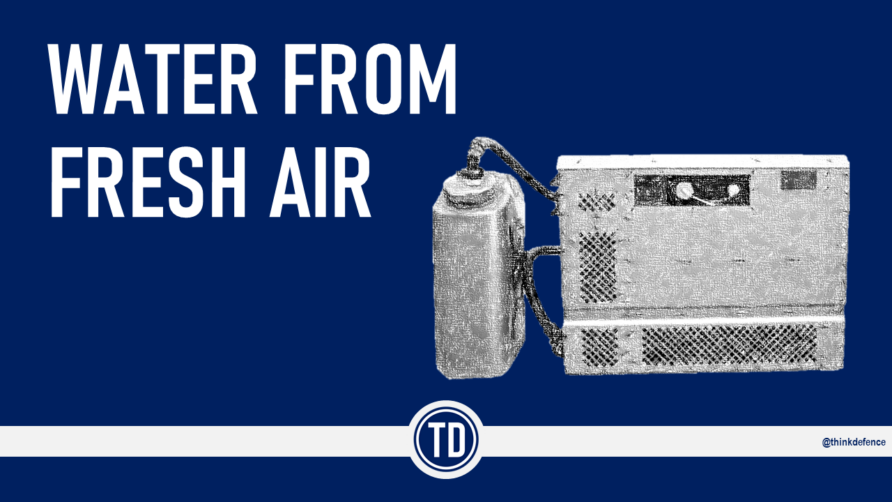Just like water and rations in the earlier posts, power is a complicated topic that is difficult to fully address in a single blog post; I can only touch the surface.
Reduce Power Demand
Power demand reduction may necessitate substantial change to operational processes or systems, challenging.
Communications and Computing Equipment
Communications, ECM and ISTAR equipment has a voracious appetite for power.
As part of broader modernisation initiatives, following a somewhat turbulent history, the British Army and Royal Marines are transitioning to various contemporary solutions, delivered by the CAIN and EVE projects respectively. Much remains to be determined, including whether the British Army and Royal Marines will diverge or converge, on radios and waveforms, for example.
Regardless of the destination, newer equipment like the Trelisware Shadow 750, Slingshot, MPU/5 and AN/PRC-163 all have much improved power management technology compared to legacy BOWMAN radios.
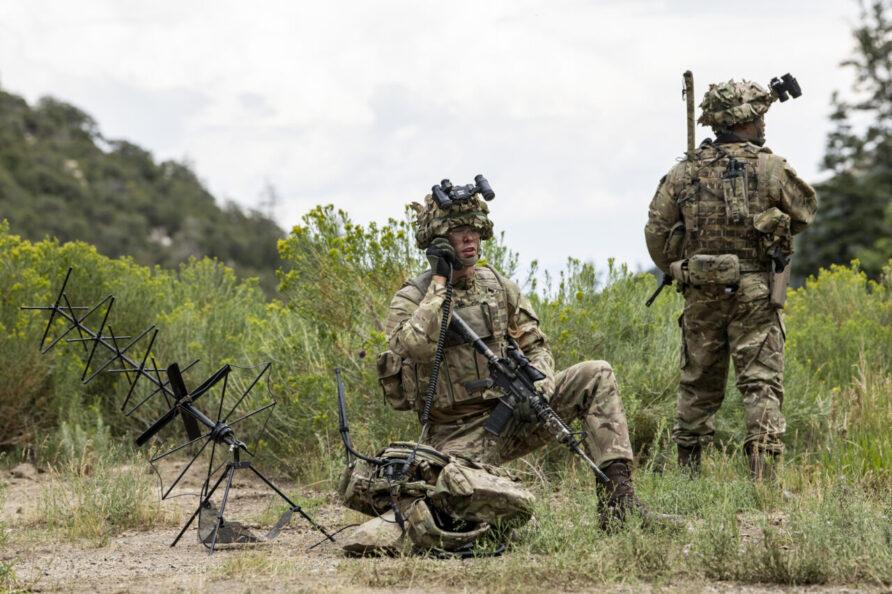
The following figures are merely indicative, as battery life will obviously vary depending on usage.
- Shadow 750 has a 3 amp hour battery that lasts 8 hours
- MPU/5 has a 7 amp hour battery that lasts 12 hours
- AN/PRC-163 has a 7 amp hour battery that lasts 8 hours
- Slingshot has a 5 amp hour battery that lasts for 24 hours
An older, but still in service, radio, like the BOWMAN VHF UK/PRC 355, uses a 9 amp hour battery from Denchi that lasts between 6 and 12 hours, and weighs 1.12 kg.
Smaller systems like the Personal Role Radio use a pair of AA batteries and last about 20 hours.
The ‘small battery’ issue simply adds to the problem; sights, illumination, and other small devices in service variously use 1/3 AA, AA, CR123, CR2032 and CR17345 types.
A recent Thales brochure discussing rechargeable batteries described the weight of batteries carried by infantry soldiers.
The weight of batteries carried by modern combat infantry is striking. This is largely driven by the widespread use of primary batteries. According to a 2011 article, a typical Canadian soldier may carry a set of fifteen AA batteries and two CR123 batteries upon exiting a forward operating base. If a mission is expected to last more than three hours, a further set of batteries will be carried. Once the expected mission time exceeds 24 hours, a soldier will carry a third set of AA and CR123 batteries – a total of 51 batteries. Another 2011 article reported that the average weight of batteries carried by US Army combat personnel in Afghanistan could amount to 4.5kg (10lb) – with some soldiers carrying 11.7-13.2kg (26-29lb) depending on their battlefield role. British soldiers are also expected to carry a considerable burden in order to power their electronic equipment. In 2012 it was reported that British infantrymen could carry 12.3kg (27.1lb) in batteries for a 36-hour patrol
Whatever dismounted situational awareness and other communications projects deliver, and hopefully, they will be Generic Soldier Architecture and STANAG 4695 compliant, there will be a latent power demand.
Power management, battery chemistry and energy density will improve, as will new radios, but here and now, deployed forces have a choice of carrying spare batteries, charging them in-situ, or having extras delivered as part of a replenishment activity.
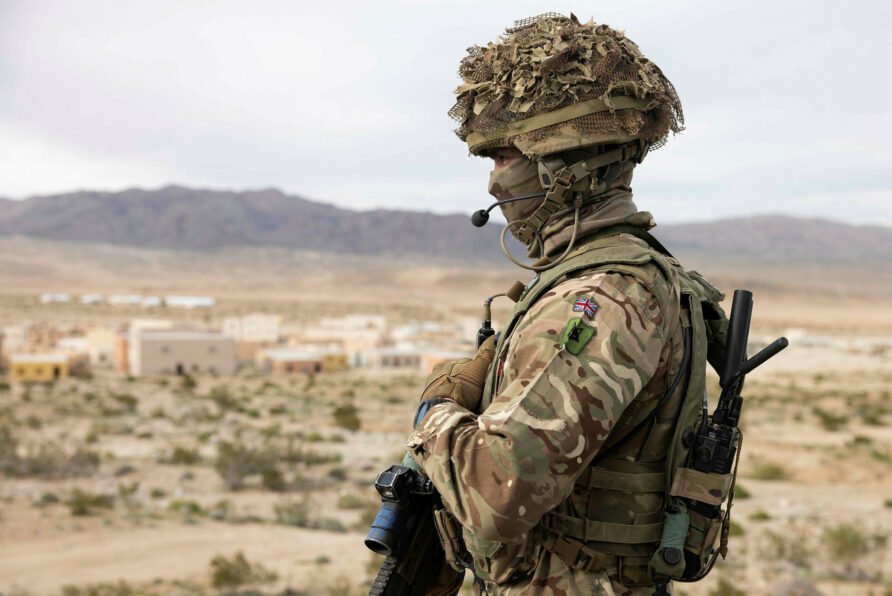
Live Off the Electronic Land
In a conflict area, would fixed, and mobile networks still be operable, and if so, could they be exploited as a reduced power option, hiding in the electromagnetic noise?
The Russian invasion of Ukraine provides valuable insight into how mobile and fixed network operators might react, and how belligerents could exploit those reactions, although it is not a given that any NATO nation would react in the same way. Because mobile networks can be useful to both sides, there may be a reluctance to destroy or deny them. This dynamic has played out in Ukraine, although it has changed over time.
It is not safe to assume these networks would be available, but might be worth looking at options if they were.
Mobile telephone network planning will consider terrain, foliage, frequency band, radiated power, tower height, antenna configuration, and technology (e.g., 4G LTE vs. 5G). A rule of thumb is that for a typical rural Radio Access Network (RAN) site, there could be an inter-site distance (ISD) of 5 to 20 km. For a typical commercial 4G handset or router, this would provide a good user experience. As sites become degraded or destroyed (or simply switched off), additional antenna solutions would enhance received signal strength.
There are many military options that exploit commercial 4G/5G, often simply an additional add on to existing equipment, but this is a post about cheap COTS options as well. One civilian use case that exploits low signal strength and low power is small boats. Typically running on 12v power and making use of dual antenna, they can use physical or e-SIMs and generate a Wi-Fi or Ethernet output.
Teltonika, Digital Yacht, and Glomex, are prominent in this market.
A commodity 10,000mAh battery bank would likely provide approximately 6 hours of run time, even in low temperatures.
Wi-Fi emitters are potentially much more numerous than 4G/5G, but they are much sorter range and will generally rely on fixed networks and mains power being available, arguably less of likelihood than 4G/5G
As with cellular equipment, the leisure and industrial markets has options, and many of them even use the same equipment, just another interface and antenna.

In an urban setting, they would be straightforward to conceal and mount.
These would be simply a ‘bearer of opportunity’, providing a lower power option that reduces power resupply or generation demand.
In addition to public Wi-Fi and cellular networks, trunked mobile radio system like TETRA/TETRAPOL might also be available.
TETRA/TETRAPOL cannot deliver high bandwidth imagery and live video, but it is perfectly capable of managing end-to-end encrypted voice and text messaging. A single TETRAPOL base station can comfortably cover a 25 km radius circle and handle 2,500 users.
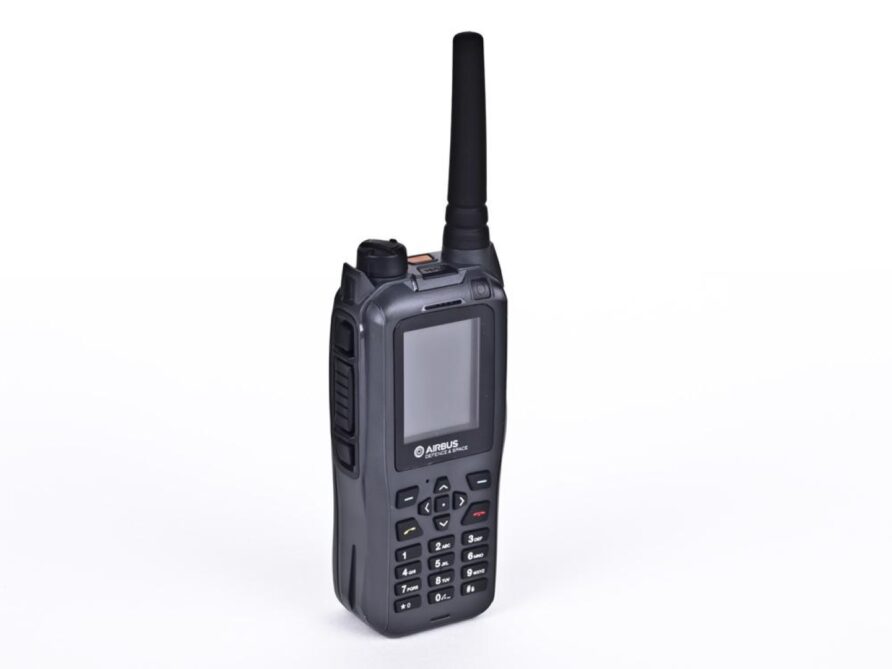
The latest Airbus TPH900 handset has a 13-hour battery life, text and status messaging, vibrating mode, covert controls and location reporting and GPS, yet comes in at less than 0.4 kg.
There are many TETRA/TETRAPOL networks in operation, although many have started to transition to 4G type networks.
Despite being superficially attractive because of the lower power demand, none of these options would be consequence free.
It requires public networks to be operating in the first place, and it would be yet more equipment transport and support, just in case.
A better approach might be to ensure modern military radio equipment also has an ability to exploit these bearers of opportunity if they are available?
Either option does not really improve resupply burdens much.
Hiding in the Digital Fog
Low-power mesh networking uses multiple devices (nodes) to create a self-organising, resilient network where each node relays messages for others, eliminating the need for a central hub and increasing overall network range and reliability. The military equipment described above makes use of mesh networking, but there are civilian alternatives that use ubiquitous frequencies and open-source software.
Again, hiding in the electronic fog whilst exploiting low-power equipment.
Some of the more common systems are used for home automation and IoT applications, but one interesting technology is Meshtastic, a fully open-source project popular with hobbyists that make use of LoRa based hardware.
Meshtastic has various presets that balance speed, mesh efficiency, and range, but they are characterised by being extremely low data rates, between 2 and 22kbs. Status updates, alerts, forms, and coordinates, yes, but images, voice and video, absolutely not. These low data rates have an upside, in some equipment, 7 days are available from a couple of AA batteries, and 2-10 km is not unreasonable at these low-power modes.
Interestingly, Meshtastic has an ATAK plugin.
Meshtastic devices are not particularly easily jammed due to LoRa’s spread spectrum and mesh topology, but targeted jamming is feasible. They are fairly easy to locate when actively transmitting, especially with GPS enabled, though mitigation strategies like silent modes or frequency hopping can help. Meshtastic has AES256 encryption, which might be good enough for the application. Meshtastic operates in the license-free Industrial, Scientific, and Medical (ISM) band, at 863–870 MHz, so it will share the spectrum with door openers, smart home devices, remote controls and utility meters.
What makes Meshtastic appealing, is its extremely low-power usage, and ubiquity, at a few tens of pounds, they become cheap enough to throw away.
Meshcore is another similar system,
An interesting transmission network is the WiBack protocol from the Fraunhofer Institute for Applied Technology (FIT). Beyond the scope of this post but, it is a low-cost and robust MPLS network protocol that makes use of the 2.4Ghz frequency, which is ubiquitous.
As with using 4G or TETRA networks, low-power civilian derived mesh networks are technically intriguing, but each has several disadvantages and would require yest more equipment.
In short, interesting, but not really any resupply reduction advantages.
Wired Communications
Although still in service, field telephones are not as widely used as they were, but as a means of reducing battery demand in semi static locations they do offer a range of useful choices.
Fixed line telephony boils down to three choices, IP, USB or two-wire analogue.
Modern systems tend to employ IP, incorporating sophisticated gateway devices and multi-functional handsets.

Manufacturers of modern IP field telephones include Leonardo, Bittium, Elbit, and Aseslan (to name but a few). None of them look cheap, certainly not cheap enough to be disposable, and none of them appear to be particularly light either.
The cabling requirements and network topologies follow those of high-speed Ethernet networks, either over copper or fibre. Power can be centrally provided using either power of Ethernet (and CAT 5/6) for copper cabling or hybrid fibre/power cables for longer distances.
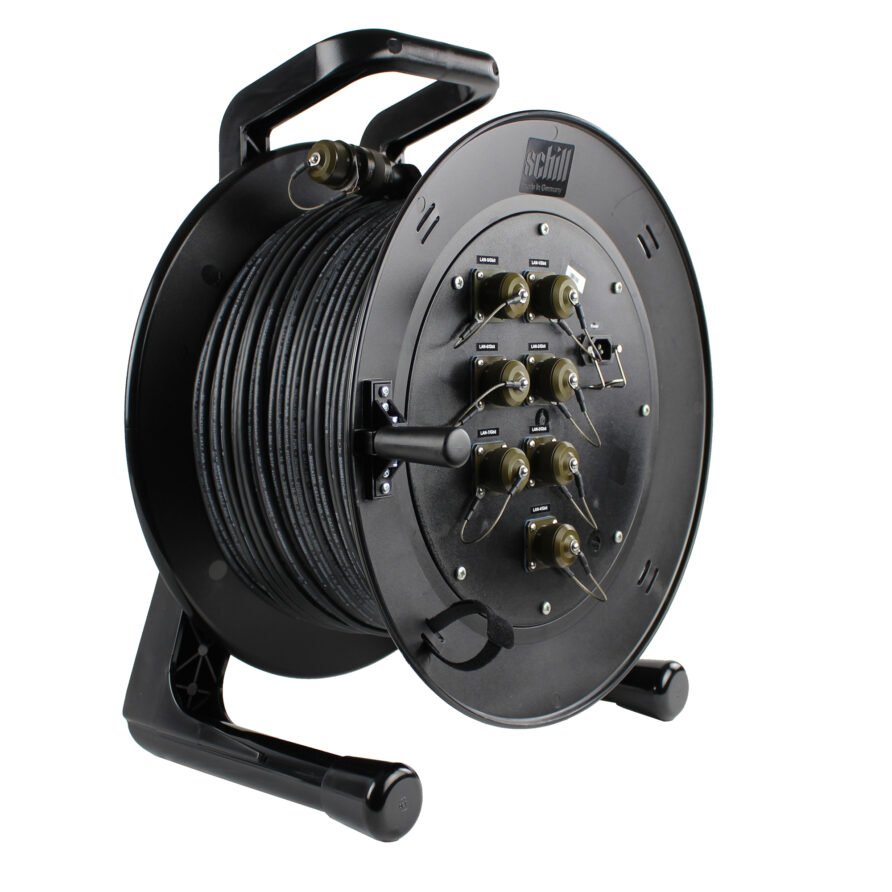
Single Pair Ethernet (SPE) is an emerging technology increasingly used for industrial automation applications that provide 10Base-T at 1,000m, much longer than the 305m in traditional four pair structured cabling. 10Mbs is relatively slow in a modern network but for basic communications, more than adequate.
The cable is much smaller and lighter, and can be used with terminal connectors for ease of use, or a compact and high density connectors (IEC 63171-1) that are also available in ruggedised versions.
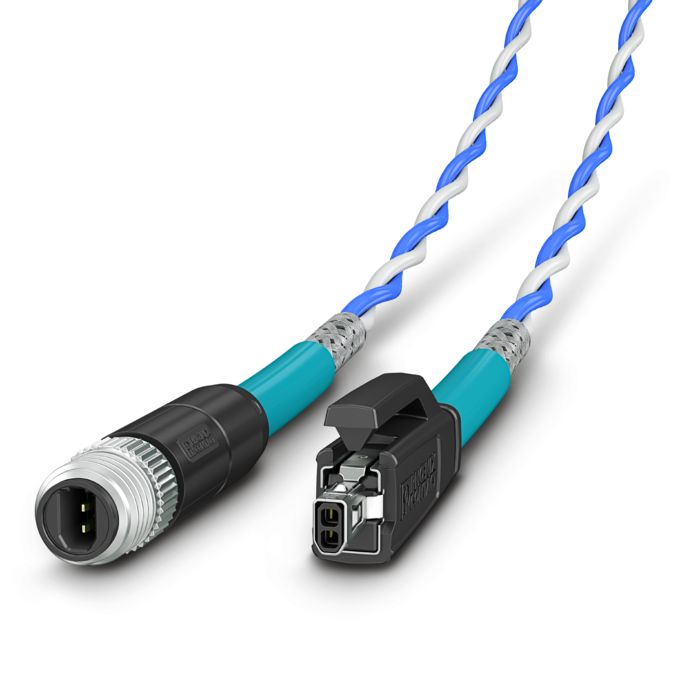
Another great benefit of single pair Ethernet is that it still supports power over Ethernet. Devices can be remotely powered, with obvious resupply reduction benefits.
Replacing a short range radio link with USB-C PD or Power over Ethernet (PoE) cables not only reduces emissions, but can provide very high bandwidth, and remote power.
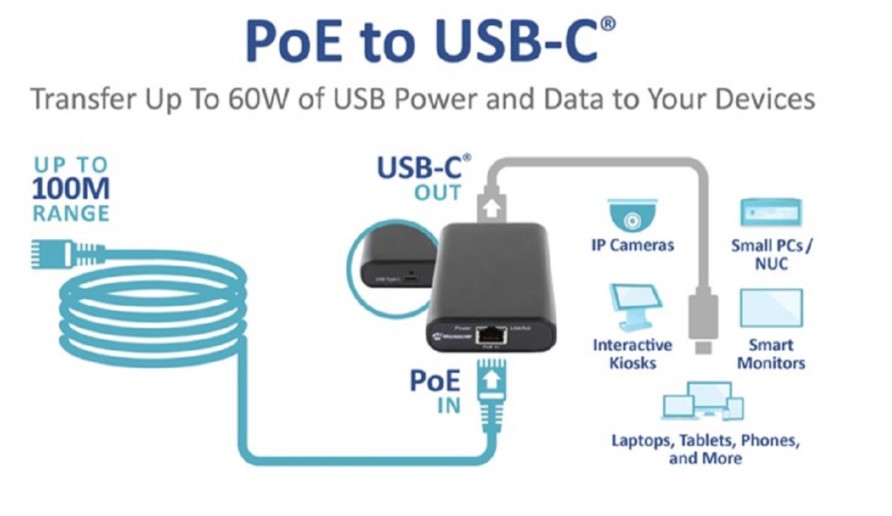
Cheaper than both, simple two-wire analogue systems are equally viable.
A return to DON-10.
D10 or DON10 cable is a twin-core twisted pair field telephone cable designed for military communications within the British Army’s CLANSMAN radio system (a legacy tactical communications network introduced in the 1970s).
The Royal Signals Museum provides an answer to why DON.
Each of the cables comprises 4 strands of tinned copper and 3 of steel, the latter of which provides its strength, half a tonne breaking load.
A dispenser holds 800m of cable, weighing approximately 10-12 kg.

Norden D10 is only capable of carrying low bandwidth traffic, but it is three times lighter than a conventional four-pair Unshielded Twisted Pair (UTP) Cat 5/6 cable, with hugely more durability.
With a drone or quad bike ATV, cables can be quickly deployed.
The CLANSMAN era PTC405 field telephone and 16 line Unit Level Switchboard (ULS) used D10 cable. I am not suggesting we dust these off relics, but there are a couple of modern systems that use single pair cable and designed for ultra-low power applications.
The first is a military system called the Rapid 40, unfortunately, the US manufacturer is no longer in business so you have to head into the Web Archive to look at it. Ordinarily, this would just be a passing interest, but the marketing materials clearly show it in use by the Parachute Regiment, so I wonder if it entered limited service.
More realistically, the APM- 40 Command & Control System, from J&R Telecom in the UK, is marketed as an emergency analogue transportable telephone and PBX system for rapid deployment.

The system can use a single line or ring topology
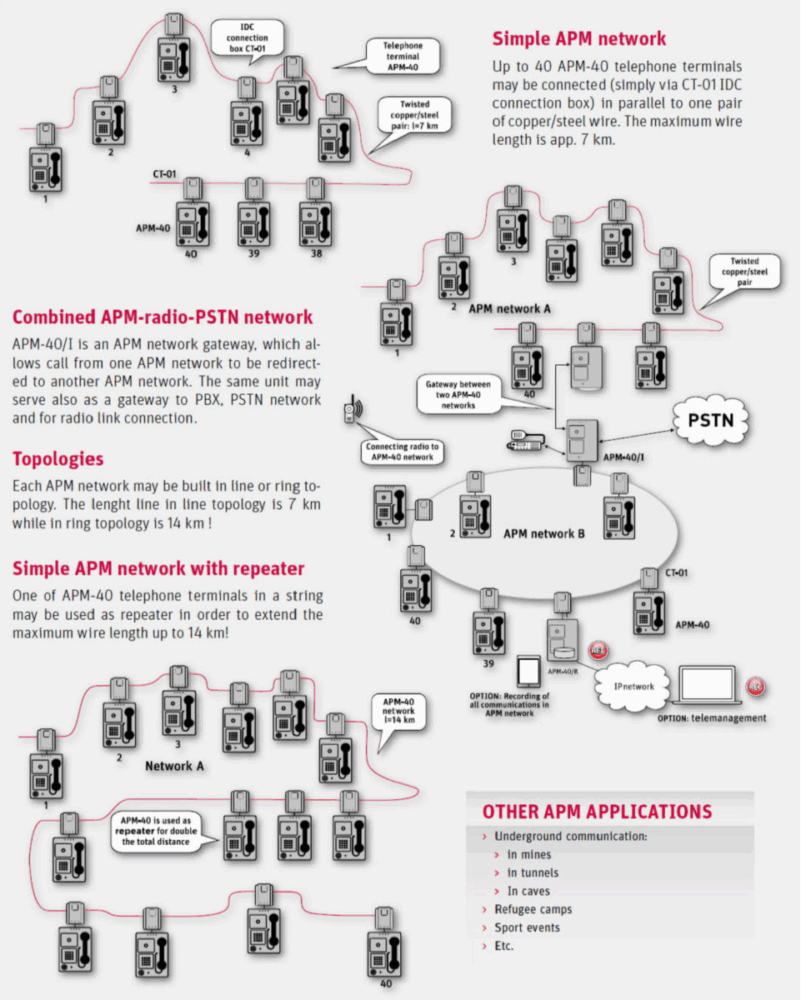
A single system is good for 7 km, with repeaters able to increase that to 14 km. Gateway devices also provide options for connecting to other networks. Connection is via a simple binding post or tool-less IDC blocks.
What makes it interesting from a resupply reduction perspective is this
APM-40 is powered by standard AA batteries providing 86 hours of off hook talk time and 1 Year standby, or locally (with solar panels and rechargeable batteries), which ensures total independence from the electricity network.
Combined with D10, the APM-40 could offer a very cheap, simple, robust, and low-power means of maintaining basic communications for dispersed units.
Does it replace conventional radios, of course not, but they are light, and cheap enough to be treated as a semi disposable item, available off the shelf right now.
Other Power Consuming Equipment
The other main source of power consumption in this context or small HQ’s or command posts.
I have covered power in a command post environment in this post
Beyond the scope of this series, pop over there and have a read.
Power Closer to the Point of Need
Improved power management in modern equipment, reduction of battery duplication, and alternate methods such as fixed line communications could all reduce overall power demand, but they cannot eliminate it.
And so, power generation must be considered.
Living off the Power Land
As with water, food, and even communications (to some extent), mains power may remain available at forward locations.
Exploiting mains power could literally be as simple as plugging a device in, assuming there is one, or it could require more advanced techniques such as parasitic power or electrical engineering work to, basically, steal someone else’s power.
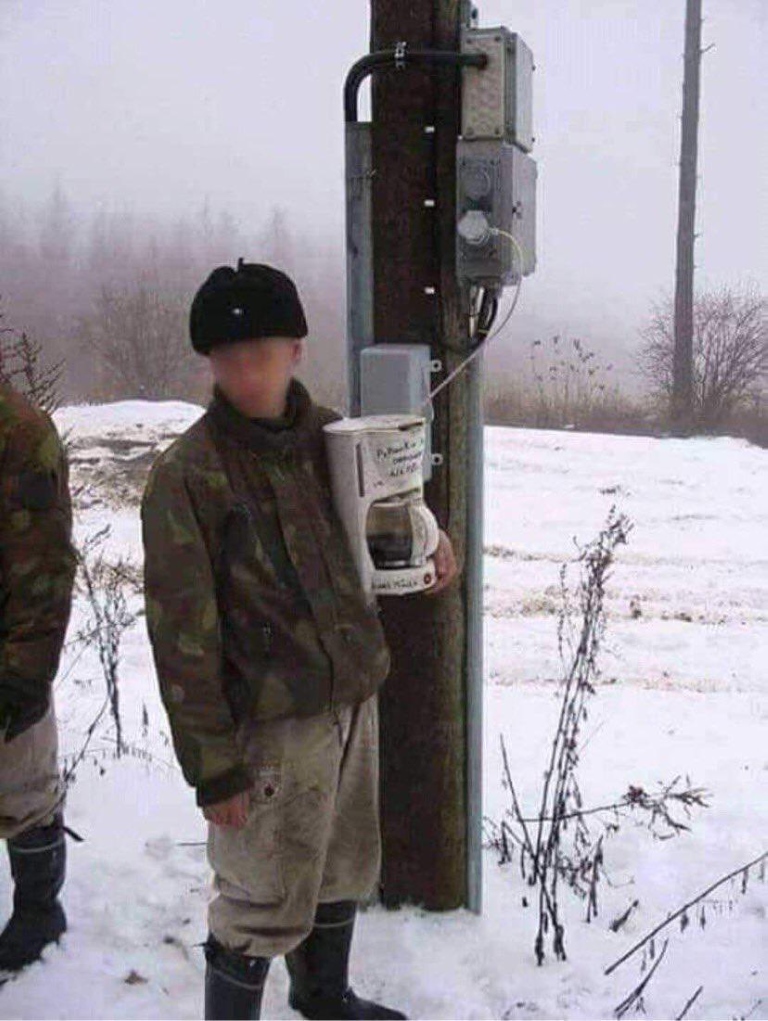
There may also be portable power banks in commercial and domestic premises that could be exploited.
Power tool batteries will likely be readily available, and these may provide an additional source to be harvested.
As long as military power equipment, chargers and similar systems, can plug into these sources, it would be simple to develop procedures, but like all similar strategies, it cannot be ‘banked on’ and so it should be considered a useful addition, but no more.
Small-Scale Generation and Storage
The existing mix of Light Forces Generator (LFG) and Field Electrical Power Supplies (FEPS) provides the bulk of deployed forces power generation.

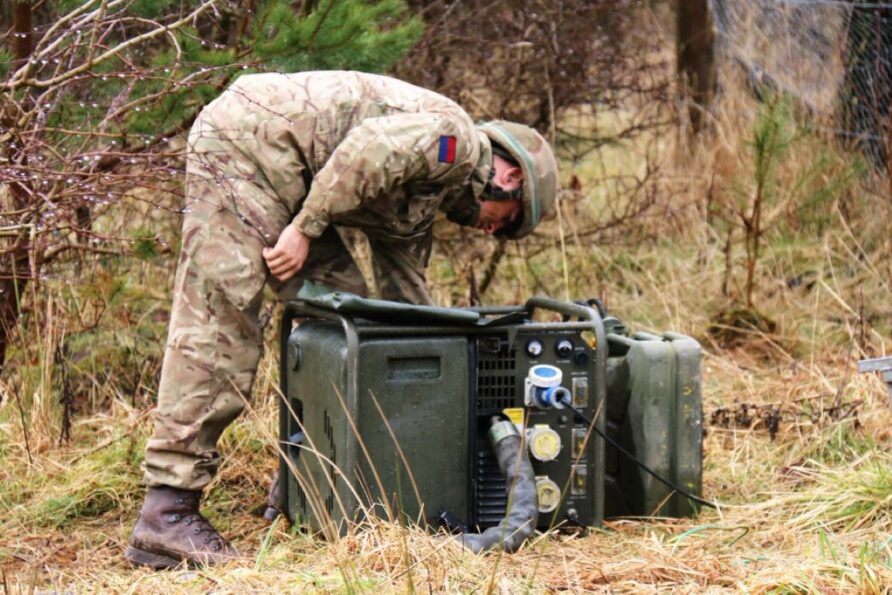
Many would argue this is not an optimal mix, and with a prevalence of 240v equipment in wide use, the power demand could be significantly reduced with even a modest investment in higher capacity power bank systems and lower power lighting/computing devices.
A flat rack based mounted large generator could avoid using multiple FEPS for large HQs and field hospitals.
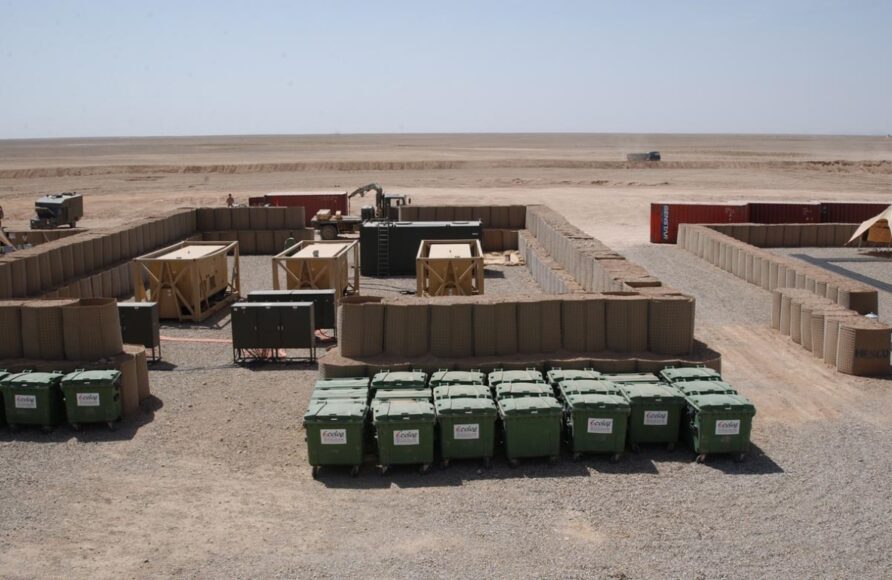
Large Battery Energy Storage Systems (BESS), and these are becoming increasingly used in the building industry.

There is no reason these could not also be adopted for defence applications.
Slightly smaller, and therefore easier to transport, vehicle rechargers can also be used for other purposes. They tend to have forklift slots and typically range in power capacity from 30 kWh to 250 kWh, with a 100 kWh unit weighing circa 1,500 kg.
An example is the 50 kWh unit from Zapme.
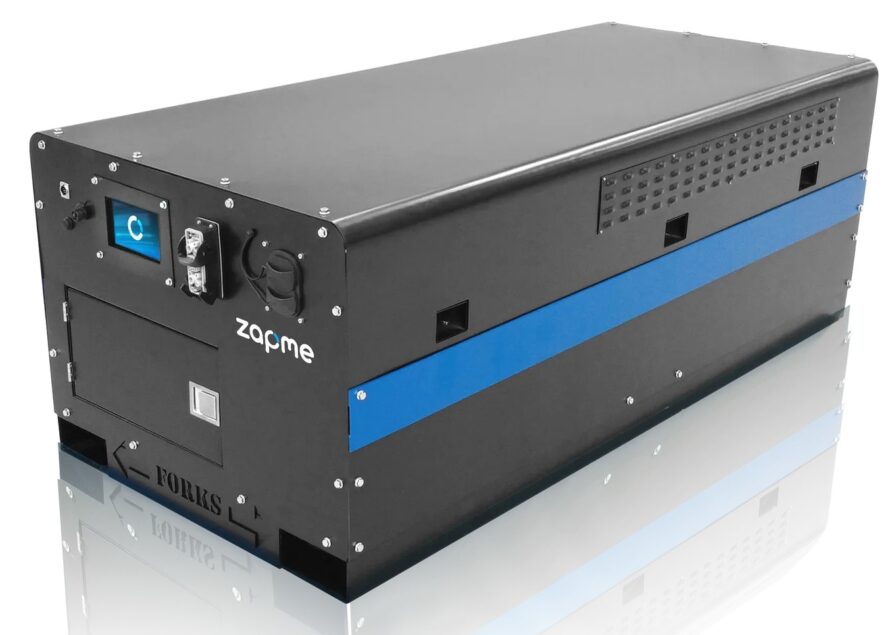
And a hybrid power source for tactical use offer a mix of power and silent running.
A good example of the latter is the FOBGrid AC 1.6kVA Tactical Hybrid Module from Zero Alpha in the UK.
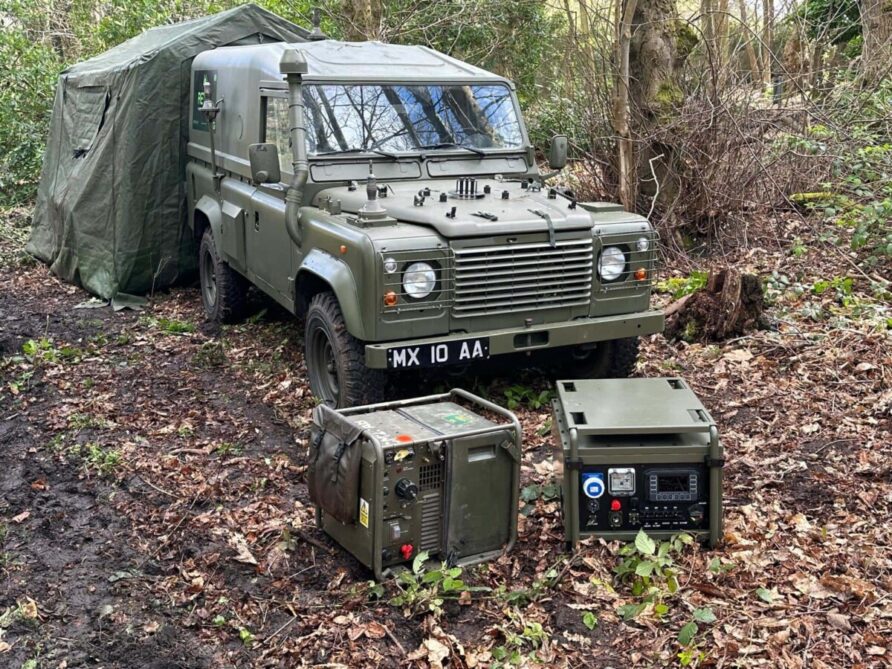
Defence batteries require compliance with a wide range of standards. The UK has some innovative and successful defence battery manufacturers, Lincad, Denchi and Steatite. A casual browse of their product catalogue shows that batteries are not just batteries, having integral discharge (for air carriage), ruggedised connectors and diagnostic interfaces.

They will typically be in complex systems with chargers, conditioners, and multi-battery management systems, all having military standards’ compliance.
Battery and connector management remains a difficult challenge, there are many incompatible types that result in excess power being available at the point it is not needed, but not enough power where it is.
Systems like the Galvion Squad Power Manager, SFC Power Manager 3G, and Zero Alpha Merlin range all provide a path to improved power management, and ultimately, this will reduce resupply demand.

Civilian power tool batteries could also be a means by which connectors are standardised for non-critical equipment.
The Dewalt Flexvolt and Makita LXT/XGT are two examples of battery ecosystems that can be wised across a wide range of these applications. Makita has developed a battery backpack that allows multiple batteries to be held off the tool, thus relieving fatigue and extending run time.
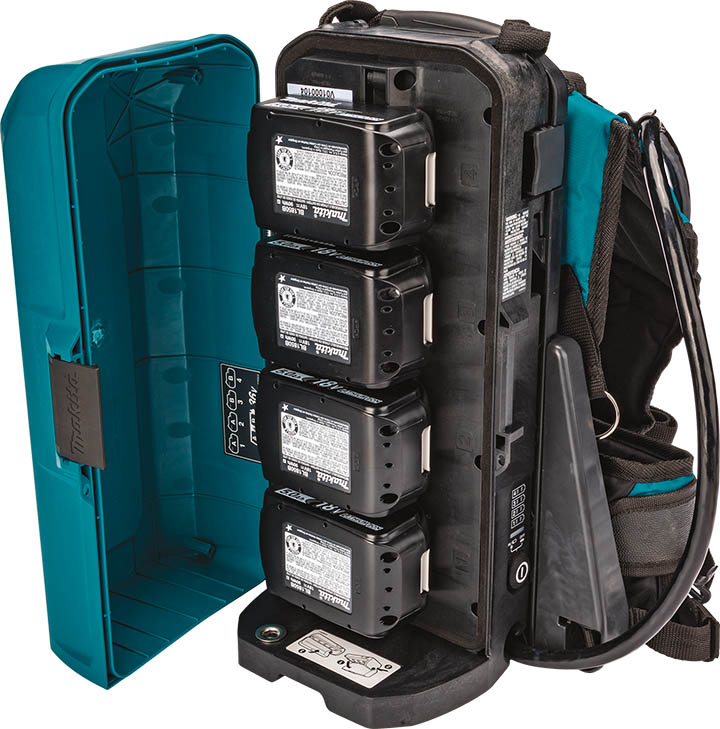
With the British Army standardised on Makita tools, using them for lighting and other applications would seem a useful means of standardisation.
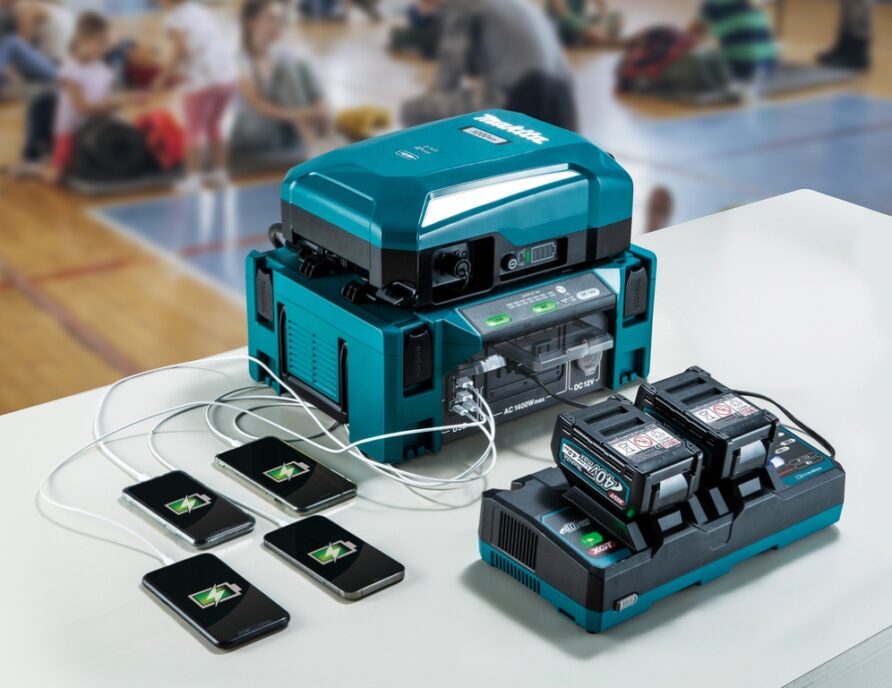
It is also worth investigating the rapidly expanding professional power pack market for solutions that avoid running generators.
Ecoflow is a good example, with a range of products to cover multiple scenarios.

There have been many examples of this type of equipment being used by forward forces in Ukraine, they are proven, and cost-effective.
With Sodium Ion battery chemistry now emerging, the ignition hazards of Lithium-ion can be mitigated.
The Solus Kratos is marketed as a ‘jerrycan of power’

The video certainly looks interesting.
Fuel cells address the noise and emissions problems of traditional generators, but they are expensive.
The Royal Marines have SFC Jenny and the larger Emily fuel cells in service.

Solar cells can be used to augment generators and fuel cells, but obviously, have certain limitations, although we have trialled them several times.
The US Ground Renewable Expeditionary Energy Network System (GREENS) is an integrated portable power system that uses solar energy.
The GREENS is a modular man-portable solar energy conversion and management system that harvests solar energy using photovoltaic solar panels. Distribution of energy is through a Power Distribution Kit (PDK) that uses an intelligent management system and stores excess energy in four High Energy Density Batteries (HEDB). The use of an Output Paralleling Adapter (OPA) and five GREENS will increase nominal output from 300 to 1,500W or peak output from 1,000 to 5,000W. The GREENS can exceed the 300W nominal output limit and continue to operate for a 24-hour period with no service interruptions when connected to the One Man Portable Generator (1MPG) with an Extended Run Tank (XRT) or auxiliary AC or DC inputs. There is one QUADCON for every two GREENS
As can be seen in the image below, it also uses a petrol generator.
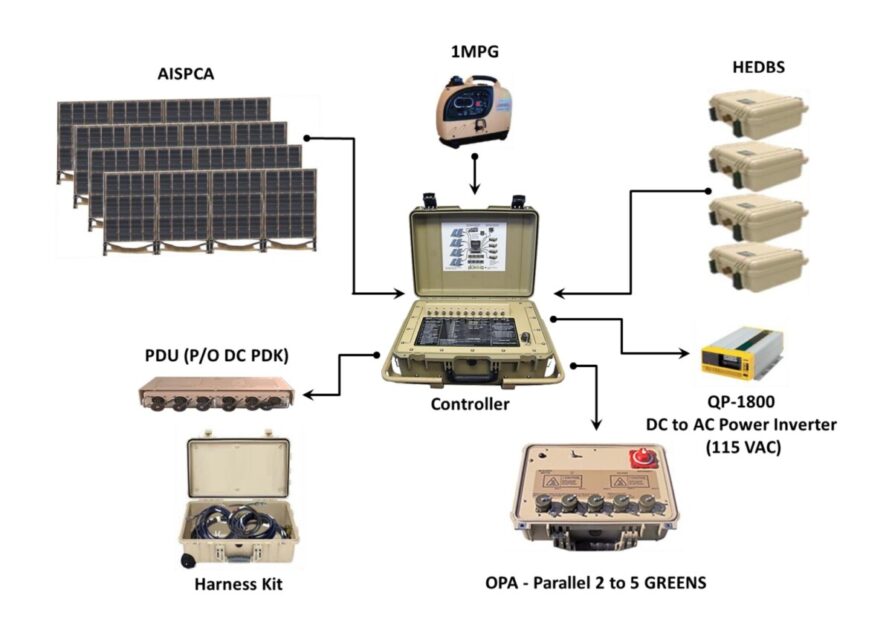
At the other end of the scale, hand generators are still available, this one (again) from Zero Alpha.
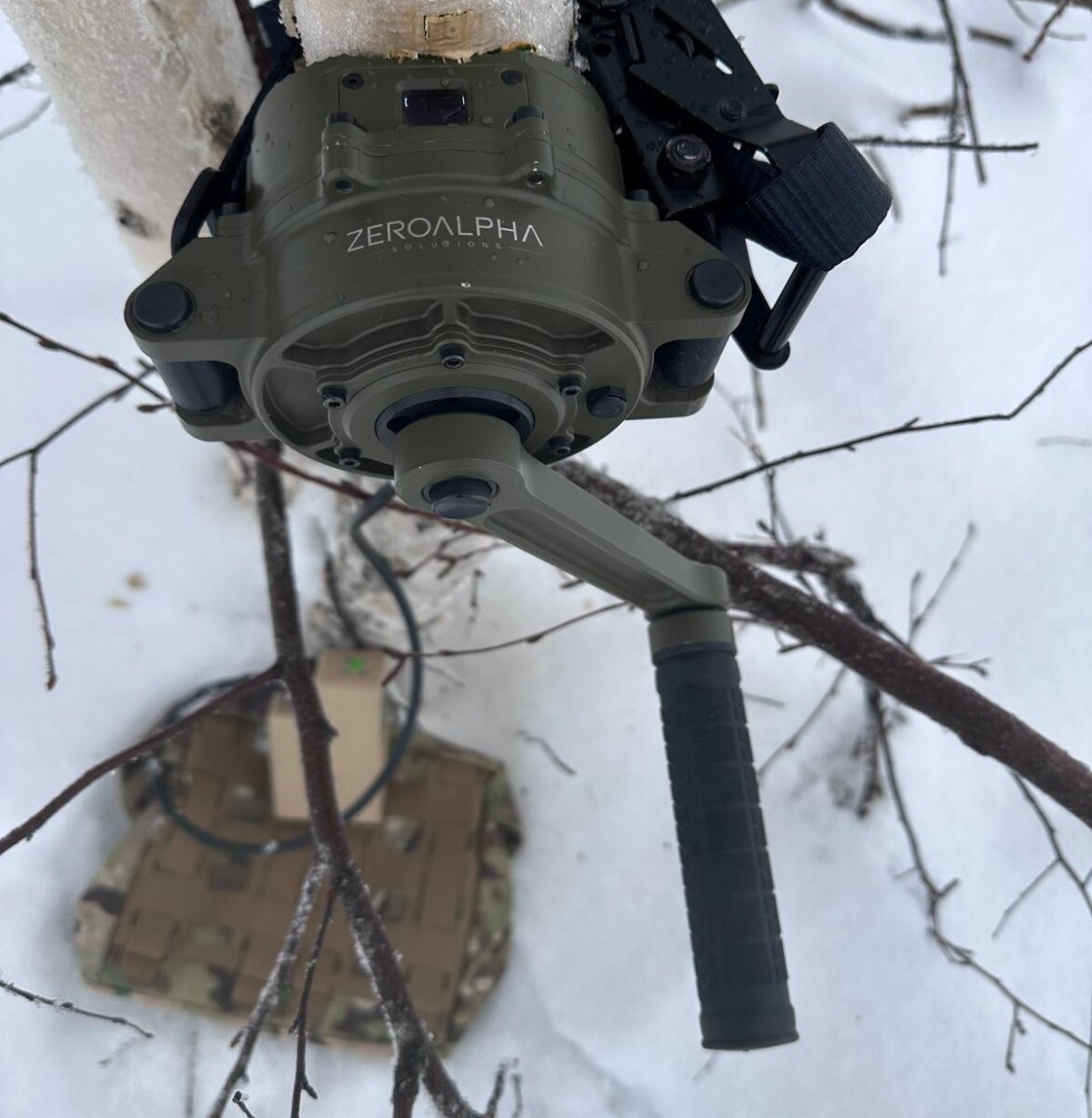
Described as
Weighing just over 2kg and delivering up to 67w the Hand Crank Generator, enables the user to incrementally charge a range of in-service batteries to increase their operational endurance in remote and isolated locations without the need to carry additional batteries.
Civilian models are available, but these tend to be quite flimsy.
Summary
No matter how you look at it, power is a significant component of resupply reduction, but there are no clear options to quickly achieve it without investment.
It is not unreasonable to bank on better power management on newer radios to reduce energy demand, but as always, worth a look at other options.
Living off the land certainly provides some options, but they are limited.
Zero Alpha, a fantastic UK SME, has plenty of power management solutions ready to go, off the shelf, they are doing great things in this area already, let’s hope they continue to do so.
I also like the APM two wire telephone, simple, and cheap enough to be disposable.
And as always, there are loads of activities going on behind the scenes we only hear snippets about, the problem is being looked at.
